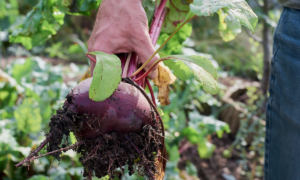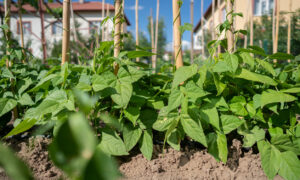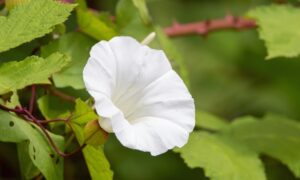We independently research, review, and recommend the best products. If you buy something through our links, we may earn a commission. Learn more.
There’s nothing quite like the sight of wisteria in full bloom. The cascading clusters of fragrant flowers arrive in a showy spectrum of kaleidoscopic colours that demand attention even in the most dramatic gardens. But, as anyone who’s grown wisteria knows, it’s not just a matter of planting and forgetting—on the contrary. It’s a vigorous, hardy climbing shrub that craves continual care and training. A deciduous diva if there ever was one.
I’ve grown my fair share of wisteria over several decades, so I know a thing or two about what it takes to get it right. So, strap in. Here I’ll share my secrets for choosing the right wisteria species, discuss how to plant and care throughout the year, and offer a few tips on pruning and training for the best results.
Contents
Choosing the right wisteria variety

As you’ve probably guessed, wisteria comes in a few different shapes and sizes. The most common in the U.K is Chinese wisteria (Wisteria Sinensis) and Japanese wisteria (Wisteria Floribunda) — close cousins of the woody climbing vines that belong to the legume family formally known as Fabaceae.
The Chinese variety tends to be more relaxed with a natural growth habit, blooming earlier in the season. Japanese wisteria, on the other hand, is more upright and has a compact growth habit. The latter also blooms later. Did you know that these pair grow in different directions (Chinese anticlockwise and Japanese clockwise)? You’ll want to keep this in mind if you’re training wisteria to grow on a structure, as you could end up with unsightly bold spots!
Then there’s American wisteria (Wisteria frutescens), my absolute favourite. This magical vine cascades effortlessly in lilac-blue blossom, creating a waterfall effect. But it’s not just the plant’s ornamental foliage that makes it a great choice—it’s also less invasive than Chinese wisteria and extremely hardy, making it perfect for UK gardens. Unlike other varieties, American wisteria is less susceptible to pests and diseases, potentially saving you headaches further down the road, too. Personally, if you’re starting out with wisteria, I’d plump for this variety.
Finding a spot and planting wisteria
To plant wisteria, prepare by finding a sunny spot with well-drained soil that has a pH between 6.0-7.0. If your garden has heavy clay soil, I recommend improving the texture by amending it with some organic matter before planting—mulch, dead leaves, vegetable compost, etc.
Looking to grow wisteria against a house wall or on a pergola? You can do this by simply tying the stems to galvanised wires fixed horizontally along the wall or to a post. If you’d rather plant wisteria in a pot, just bear in mind that it’s more work, as you’ll need a stricter feeding schedule. In these cases, I recommend using a pot that’s at least 12 inches in diameter, filled with shrub compost.
Once you’ve picked the perfect spot, it’s time to plant your wisteria. Start by digging a hole that’s about twice the size of the root ball, and be sure to plant it at the same depth it was in the pot. Then, backfill the hole with soil and give it a good watering.
Pruning wisteria

You’ll need to prune your wisteria regularly both to shape the plant and encourage blooming. I find the best time to prune wisteria is twice a year, before new growth appears. Go for August and February.
Summer is when you’ll cut back the long, vigorous shoots to a couple of buds from the base of the current season’s growth. This will encourage the development of short-flowering spurs that carry the blooms. It’s also a good idea to remove any side shoots that don’t align with the framework you’ve established. On older wisterias, simply prune side shoots back to your framework of strong shoots.
I’ve found pruning side shoots back to a maximum of five buds in February tends to work best and keep the plant in check. To train your wisteria, you can use a method called “chinese finger” where you pinch the tips of the main stem to encourage lateral growth.
Feeding wisteria
For the best results, and based on my experience, wisteria needs feeding monthly with a high potash fertiliser during the growing season. If yours is pot-grown, however, you’ll want to up watering and feeding to weekly.
A good rule of thumb is to use about 1 lb of fertilizer per year of the plant’s age. And don’t forget to give it a good watering during dry spells, wisteria likes to stay moist.
Wisteria pests and diseases
Wisteria is a hardy plant, but it is susceptible to pests and diseases. One of the most annoying of these is the wisteria aphid. These small, soft-bodied insects suck sap from the plant’s leaves and stems, causing distorted growth. You can usually tell when it’s walked all over your lovely wisteria by a sticky residue that appears on the foliage. To control wisteria aphids, I recommend using an insecticidal soap or neem oil.
Another common pest that can affect wisteria is the wisteria scale. These small, armoured insects feed on the sap of the plant’s leaves and stems, causing yellowing and wilting of the foliage. Wisteria scale can also excrete a sticky residue on the foliage, which can attract ants. Again, the best way to combat this is by using horticultural oil or insecticidal soap. Also keep an eye on the ant population, as they protect the scale from predators—if you notice an ant infestation, use bait traps to control them.
Wisteria can also face powdery mildew, a fungal disease that affects the leaves and stems of the plant. It’s so named because it appears as a white powdery coating on the leaves, causing them to yellow and drop prematurely. To prevent powdery mildew, provide good air circulation and avoid overcrowding plants. Failing that, try a fungicide specifically formulated for powdery mildew.






